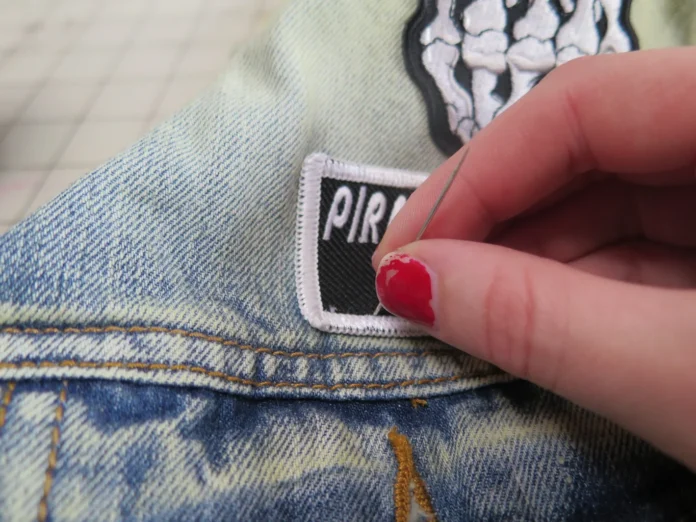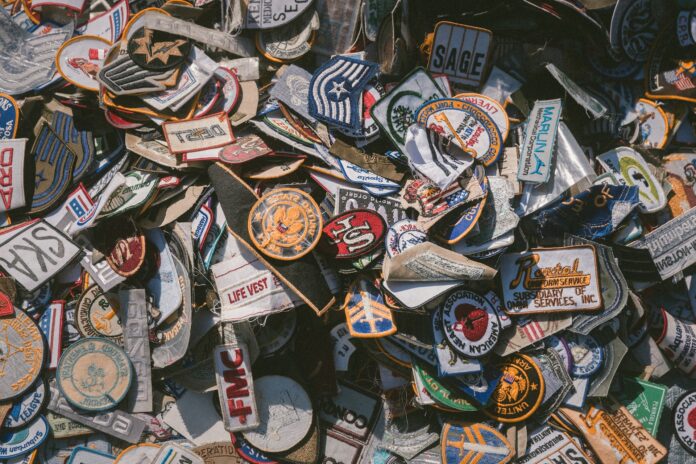Denim is back and better than ever! From its 70s-era roots up to the dayglow 90s, everyone’s enthusiasm for modern denim streetwear can’t be contained. This timeless fashion even manages to make an impact during fall – though it looks great year-round. So how do you take this classic style of clothing and give it a refreshing update?
Where you find your patches truly matters – from chic to bad-ass, the combinations are endless.
But keep in mind, patches are not the only way to customize your denim clothing. Another popular way to add a personal touch is by using myenamelpins.com. These small metal pins come in a variety of designs and can easily be attached to denim jackets, bags, and hats. With enamel pins, you can add a pop of color or a unique design to your denim clothing and make it truly one-of-a-kind.
Are you in search of a cost-effective and creative way to customize your denim jackets? Then look no further – learning how to sew patches on your favorite pieces is an easy solution! Plus, with custom-made patches from patch makers like Vivipins.com, the possibilities are endless. Get out there now and put those sewing skills to work for some truly stylish results.
In this comprehensive guide, we’ll show you the way to add a patch with ease. All it takes is following our simple instructions:
A Brief History of Denim and Patches

Before diving into how to patch denim jackets, let’s take a moment to appreciate the unique history of denim and patches. Understanding where these materials come from will give you an appreciation for their style, helping you craft something that truly stands out.
Denim has a rich history, spanning all the way back to India and its prototypical dungaree fabric, as well as France. Its name is derived from Nimes—its original production city—which was known in French as “Serge de Nimes”. Thus denim became popular worldwide due to its diverse range of origins and long-standing pedigree.
Denim first made its way to the United States through hard working Americans, such as cowboys and miners who needed a fabric that could handle their rigorous labor. Fortunately, denim provided just what they required with its remarkable strength and durability.
The art of patchwork on jeans has its roots in the ‘70s counterculture movement. Bikers and hippies alike embraced this trend as it could serve a variety of purposes while also making their wardrobe more vibrant and unique.
From bikers and club members who used patches to denote their affiliations to teenagers looking for a creative outlet as they embroidery jackets with patches, hippies, and disco queens adding vibrant personal flair – patchwork has been an enduring form of self-expression.
If you want to express yourself through patchwork, then mastering how to sew a patch is essential. Pre-made pants with patches included can be costly and range from $60 for lower-budget brands up to an outrageous $1300 for designer couture pieces. Here’s the secret to getting high fashion items at low-cost prices – it’s as easy as pennies changing hands.
Things You Need To Sew Patches

Before you start to patch up your denim jacket, there are a few items that you must acquire. These include:
- Denim jacket or pants
- High strength medium-sized needle
- Patches
- Pins
- Thimble for protection
- Washable glue
Shopping for something decorative? Look no further than online patches! With an array of styles and sizes to choose from, these fashionable accessories will surely be a hit with everyone in your circle. Whether you prefer small or large areas on the body, there’s definitely something that suits every taste and age group.
1. Position Your Patches

To sew a patch on jeans, the first step is deciding where to place it. Small patches look great and are best suited for back pocket placement; medium-sized patches can be placed around the upper hip region.
When deciding where to place patches on a jacket, always consider the design. The most eye-catching areas are typically the upper back, upper arms, and lapel area. If you are applying for specific insignias such as official memberships or scout badges then make sure to follow their respective guidelines for placement.
2. Lay Down Your Denim Fabric
Place your denim jeans or jackets on a smooth, even surface. Make sure to get rid of any lumps or wrinkles in the material. It’s better to work on one large part of the fabric first, such as the chest area, back pockets, or arms and legs.
When you’ve laid out your fabric, start to arrange your patches in a balanced way. Don’t weigh down one side of the jacket too much – stick with an even distribution. Putting patches on jackets is all about finding the right combination that looks best aesthetically – larger ones usually look great solo while smaller ones can be grouped together nicely.
3. Pin and Secure Your Patches
To secure the patches, utilize a pin. If you’d like to learn how to sew on a patch, consider using two or more pins and arranging them in the center of the patch. Doing this will create an outline that can easily be followed when sewing around their edges.
4. Thread Your Needle
Get stitching! Sewing with a single thread is great for small projects, but double or quadruple threads can make your stitches resilient — even if it causes potential frays and knots. When you choose to use multiple threads in your needle, you’re ensuring that the result of all your hard work will last through any wear and tear.
To create discreet stitches on thinner textiles, a single thread is a way to go. Have you ever wondered how to use a single thread for patching up your denim jacket? Well, it’s easy! All you have to do is simply double up on your stitching.
5. Start Stitching

When you’re all set, sewing a patch on jeans begins with making the stitches around its edges. Aim to be 2-3 mm away from the outer rim of your garment. Create small and tight stitches – if possible, try to make them 4mm or less in length! Push down your needle and move it away from your item while stitching around the circumference until fully covered. To secure it tightly, tie one knot below the fabric (or several knots for extra reinforcement).
If you desire to show off your patches on denim, then you have many options. If money is not an issue, head straight for haute couture; however, if cost-efficiency reigns supreme in your decision-making process, it’s best to master the skill of sewing them onto denim yourself.







